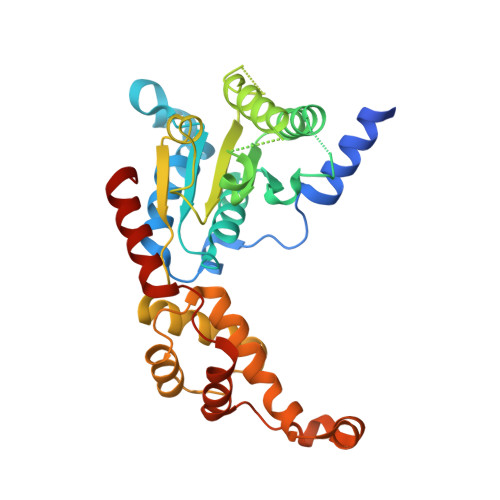Analyzing Resistance to Design Selective Chemical Inhibitors for AAA Proteins.
Pisa, R., Cupido, T., Steinman, J.B., Jones, N.H., Kapoor, T.M.(2019) Cell Chem Biol 26: 1263
- PubMed: 31257183
- DOI: https://doi.org/10.1016/j.chembiol.2019.06.001
- Primary Citation of Related Structures:
6P10, 6P11, 6P12, 6P13, 6P14 - PubMed Abstract:
Drug-like inhibitors are often designed by mimicking cofactor or substrate interactions with enzymes. However, as active sites are comprised of conserved residues, it is difficult to identify the critical interactions needed to design selective inhibitors. We are developing an approach, named RADD (resistance analysis during design), which involves engineering point mutations in the target to generate active alleles and testing compounds against them. Mutations that alter compound potency identify residues that make key interactions with the inhibitor and predict target-binding poses. Here, we apply this approach to analyze how diaminotriazole-based inhibitors bind spastin, a microtubule-severing AAA (ATPase associated with diverse cellular activities) protein. The distinct binding poses predicted for two similar inhibitors were confirmed by a series of X-ray structures. Importantly, our approach not only reveals how selective inhibition of the target can be achieved but also identifies resistance-conferring mutations at the early stages of the design process.
Organizational Affiliation:
Laboratory of Chemistry and Cell Biology, The Rockefeller University, New York, NY 10065, USA; Tri-Institutional PhD Program in Chemical Biology, The Rockefeller University, New York, NY 10065, USA.
















